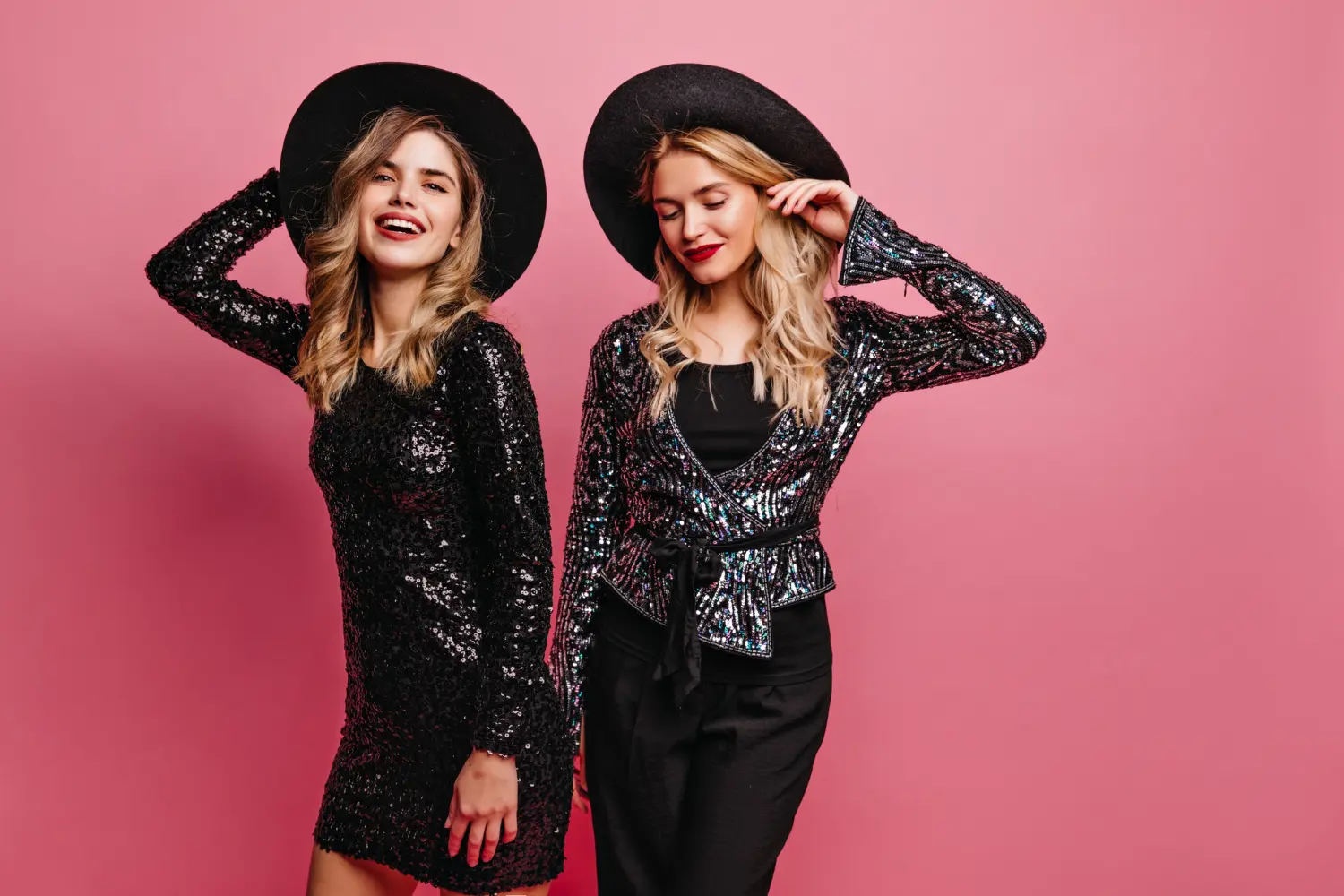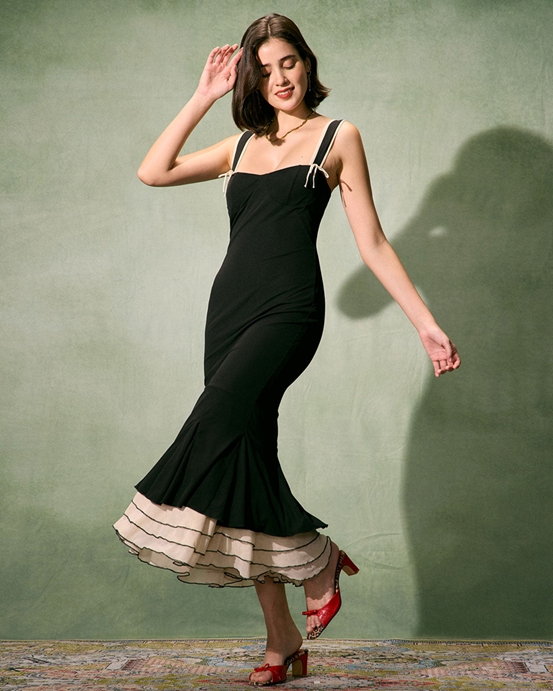In an industry often characterized by constant turnover and environmental impact, a quiet revolution is taking place. At Rvchicly, we believe that true luxury lies not just in aesthetics and quality, but in the integrity of creation. Today, we explore how to navigate the complex landscape of sustainable fashion while maintaining the elegance and sophistication that defines the modern woman’s wardrobe.
Beyond Buzzwords: Understanding True Sustainability in Fashion
“Sustainable,” “eco-friendly,” and “ethical” have become ubiquitous terms in fashion marketing—but what constitutes genuine commitment versus surface-level greenwashing?
True sustainability encompasses the entire lifecycle of a garment:
- Material sourcing: How and where raw materials are obtained
- Production processes: Energy use, chemical treatments, and waste management
- Labor practices: Fair wages, safe conditions, and worker dignity
- Transport logistics: Carbon footprint of moving materials and finished goods
- Product longevity: How a garment’s design and quality affect its usable lifespan
- End-of-life considerations: What happens when a garment is no longer wearable
“Sustainability isn’t a single attribute but rather a comprehensive approach to fashion creation,” explains our Head of Production. “At Rvchicly, we evaluate each decision through this holistic lens, recognizing that true sustainability requires continuous improvement rather than perfection.”
Decoding Sustainable Materials: What Really Matters
The environmental impact of fashion begins with material choice. Here’s what to understand about commonly used fibers:
Natural Fibers: Complex Considerations
While natural fibers like cotton, wool, and silk decompose more readily than synthetics, their environmental impact varies dramatically based on production methods:
Conventional Cotton: One of fashion’s most water-intensive and pesticide-heavy crops Organic Cotton: Eliminates synthetic pesticides and fertilizers but still requires significant water Regenerative Cotton: Actually improves soil health and biodiversity through innovative farming practices
At Rvchicly, we prioritize GOTS-certified organic cotton and are transitioning key pieces to regeneratively-grown fibers as these supply chains mature.
Cellulosic Fibers: The Innovation Frontier
Plant-based alternatives like Tencel™ Lyocell and EcoVero™ viscose offer silk-like properties with closed-loop production systems that recycle water and solvents, dramatically reducing environmental impact.
Our Rvchicly Fluid Essentials collection showcases these innovative materials that deliver exceptional drape and comfort while maintaining ecological responsibility.
Recycled Synthetics: Pragmatic Progress
While virgin polyester and nylon derive from petroleum, recycled versions repurpose existing plastic waste. Our performance pieces incorporate ECONYL® regenerated nylon from recovered fishing nets and other ocean plastic, transforming environmental problems into elegant solutions.
Animal-Derived Materials: Ethical Complexity
For wool, leather, and other animal fibers, ethical sourcing is paramount. Our wool comes exclusively from certified animal welfare-compliant farms, while our limited leather offerings utilize only by-products from the food industry with vegetable tanning processes that avoid toxic chromium.
Artisanal Techniques: Heritage Craftsmanship as Sustainability
Some of fashion’s most sustainable production methods are also its oldest. Traditional handcraft techniques often require minimal energy input while creating employment opportunities in communities with generational expertise:
Hand Weaving
Our limited-edition textiles from skilled artisan partners preserve cultural heritage while creating unique, unreplicable fabrics that form the foundation of our most exclusive pieces.
Natural Dyeing
Select Rvchicly collections feature plant-based dyes from renewable sources like madder root, indigo, and weld, reducing chemical runoff while producing rich, complex colorways that synthetic processes cannot replicate.
Hand Finishing
Details like hand-rolled hems and hand-sewn buttons significantly extend garment longevity by providing stronger, more flexible construction than machine-only methods.
“These techniques aren’t simply about aesthetics—they’re about creating garments with souls that improve with age,” notes our artisan coordinator. “A hand-finished piece develops character rather than deteriorating over time.”
Identifying True Commitment vs. Greenwashing
As consumers increasingly value sustainability, distinguishing between authentic commitment and marketing tactics becomes essential:
Red Flags for Greenwashing
Be wary of brands that:
- Use vague terminology without specific certifications or metrics
- Focus exclusively on a single sustainable attribute while ignoring other impacts
- Make claims without third-party verification
- Lack transparency about manufacturing locations and practices
Signs of Authentic Commitment
Look for brands that:
- Provide specific, verifiable information about materials and processes
- Acknowledge areas for improvement rather than claiming perfection
- Share detailed supplier information and manufacturing locations
- Hold recognized certifications from independent organizations
At Rvchicly, we publish annual sustainability reports detailing our progress and challenges, recognizing that transparency builds trust more effectively than perfection claims.
Investment Dressing: The Most Sustainable Approach
Perhaps the single most impactful sustainability decision is simply buying less—but better. Investment dressing means:
Quality Over Quantity
A well-constructed garment designed for longevity might cost more initially but delivers better value through extended wear. Examine construction details like:
- Reinforced stress points
- Generous seam allowances
- Pattern matching at seams
- Clean, durable internal finishing
Our signature pieces feature these quality markers, often invisible externally but crucial for longevity.
Design Longevity
Truly sustainable garments transcend seasonal trends through:
- Thoughtful proportions that flatter rather than follow temporary silhouettes
- Sophisticated color selection beyond trending hues
- Versatile styling potential that adapts to changing contexts
Care Considerations
Extending garment life through proper maintenance dramatically reduces environmental impact:
- Washing less frequently (especially for wool and structured pieces)
- Air-drying whenever possible
- Prompt repairs for minor damage
- Seasonal storage protection
Each Rvchicly garment includes specific care guidance designed to maximize its lifespan, recognizing that sustainability extends beyond production into ownership practices.
Building Your Sustainable Wardrobe: Practical Steps
Transitioning to a more sustainable wardrobe doesn’t require radical overnight change. Consider these incremental approaches:
1. Audit Your Current Closet
Before adding new pieces, thoroughly evaluate what you already own:
- Which items do you wear most frequently and why?
- Which pieces have demonstrated longevity and maintained their appeal?
- Where are the genuine gaps in your wardrobe functionality?
2. Research Before Purchasing
When considering new additions:
- Identify brands with verifiable sustainability credentials
- Evaluate material composition and production transparency
- Consider cost-per-wear rather than absolute price
- Prioritize versatility and integration with existing wardrobe
3. Embrace Alternative Acquisition Models
Sustainability isn’t limited to new purchases:
- Explore rental for occasion-specific needs
- Consider high-quality secondhand for investment pieces
- Participate in brand take-back programs like Rvchicly’s Circular Collection initiative
4. Focus on Timeless Foundation Pieces
Building a sustainable wardrobe begins with well-constructed essentials:
- The perfectly tailored trousers in a premium fabric
- A versatile dress that transitions between contexts
- A responsibly-produced outerwear piece that combines protection with elegance
Our Core Collection offers these foundation garments, designed for maximum versatility across seasons and situations.
The Rvchicly Sustainability Journey
At Rvchicly, sustainability isn’t a marketing strategy but a core value that guides every decision:
- Our materials meet rigorous environmental and ethical standards
- We’ve reduced water consumption in production by 45% since our founding
- Our carbon-offset program neutralizes shipping impacts
- Our packaging is 100% plastic-free and made from recycled content
Yet we recognize that sustainability is a journey rather than a destination. We’re committed to continuous improvement through innovation, supply chain development, and customer education.
Elegance With Integrity: The Future of Fashion
The most exciting development in contemporary fashion is that sustainability and sophistication are no longer mutually exclusive. Through thoughtful design, material innovation, and production transparency, conscious consumption becomes not a compromise but an elevation of style.
When you choose pieces created with environmental and ethical integrity, you aren’t just building a wardrobe—you’re participating in fashion’s most important evolution while expressing your values through your most personal choices.




